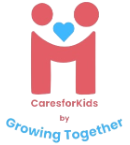Why Advertising is Key for Daycares
In today’s competitive childcare landscape, effective advertising can make or break your daycare business. Whether you’re trying to boost enrolment, build brand awareness, or engage with your community, having a solid daycare marketing plan is essential. Parents have numerous choices when it comes to childcare, so standing out from the crowd requires a thoughtful and well-rounded approach.
This guide covers everything you need to know about daycare advertising from traditional strategies to advanced digital marketing techniques designed to help you grow your daycare centre sustainably.

1. Crafting a Comprehensive Daycare Marketing Plan
Every successful daycare advertising campaign starts with a well-rounded marketing plan. Here’s how to create one that ensures your daycare centre stands out.
a. Branding Your Daycare
Your brand is what sets your daycare apart. It encompasses your logo, colours, and the messaging parents associate with your daycare.
- Create a strong brand identity: Use colours and themes that appeal to both parents and children. Your branding should reflect your daycare’s values, whether it’s about nurturing, learning, or fun.
- Develop a clear Unique Value Proposition (UVP): Explain how your daycare centre addresses the specific needs of parents. Whether it’s flexible hours, a special learning curriculum, or affordable pricing, your UVP should be prominently displayed in your marketing.
Do: Use Colors and Themes that Appeal to Both Parents and Children
-
- Do: Choose bright, friendly colours like soft blues, greens, yellows, and warm reds. These colours evoke feelings of calm, happiness, and security, making your daycare welcoming and safe for children while appealing to parents.
- Example: Use a soft yellow and green palette with accents of gentle orange for an inviting, nature-themed daycare brand.
- Don’t: Avoid overly bright or jarring colours like neon green, high-contrast blacks, and reds, as these can be overstimulating for children and unappealing for parents.
- Example: Instead of neon green and black, opt for sage green paired with warm beige to keep the brand’s feel gentle and accessible.
- Do: Choose bright, friendly colours like soft blues, greens, yellows, and warm reds. These colours evoke feelings of calm, happiness, and security, making your daycare welcoming and safe for children while appealing to parents.
Do: Reflect Your Daycare’s Values
- Do: Align your branding elements with your daycare’s values and focus. For example, if your daycare emphasizes creativity, integrate artistic icons like paintbrushes or childlike drawings into the logo.
- Example: A daycare focusing on learning might use a logo with a soft blue book icon and a tagline like, “Learning Through Play.”
- Don’t: Don’t use generic icons or messaging that lacks a unique personality, as this can make the daycare appear less trustworthy or established.
- Example: Avoid a plain text logo or a basic shape like a square. Instead, customize it with child-friendly symbols (stars, playful patterns) that reflect your values.
b. Target Audience Identification
Understand who you are advertising to. Define your ideal audience by demographics such as:
- Age of parents (Millennials or Gen Z parents)
- Income level
- Geographic location (local targeting)
- Specific concerns (safety, learning environment, convenience)
By identifying your target audience, you can tailor your daycare marketing plan to resonate with them.
2. Digital Marketing Strategies for Daycares
In today’s world, digital marketing plays a crucial role in how daycares attract and retain clients. Let’s explore several digital marketing strategies that are essential for modern daycare advertising.
a. SEO for Daycares
Search Engine Optimization (SEO) is vital for ensuring parents can find your daycare when they search online.
- Optimize your daycare website: Include primary keywords such as “daycare centre in [location],” “infant care centre” and “local daycare centre” in your web copy, blog posts, and meta descriptions.
- Local SEO optimization: Register your daycare with Google My Business and ensure your address, phone number, and opening hours are accurate. This improves your chances of showing up in local searches.
- Use parent testimonials: Online reviews are a powerful trust-building tool. Encourage happy parents to leave Google reviews, which can help improve your daycare’s online visibility.
- Technical SEO tips: Improve site speed, ensure your site is mobile-friendly, and use local business schema markup to improve your search engine rankings.
b. PPC and Google Ads for Daycare Centers
Paid advertising is a fast and effective way to increase visibility for your daycare business.
- Google Ads: Run location-based ads targeting parents searching for “daycare near me” or “childcare services.” Ensure your ad copy includes a strong call to action like “Schedule a Tour” or “Enrol Today.”
- Keyword targeting: Use both primary and secondary keywords like “affordable daycare centre” and “daycare in [location]” to capture parents actively seeking childcare solutions.
c. Social Media Advertising
Parents spend a lot of time on social media platforms like Facebook, Instagram, and even TikTok. Use this to your advantage by:
- Running targeted ads aimed at local parents.
- Posting engaging content such as videos of your daycare’s daily activities, staff introductions, and child development tips.
- Use paid social media advertising to promote open house events or special promotions.
d. Retargeting Ads
Many parents might visit your website but leave without taking action. With retargeting ads, you can show ads to these potential customers as they browse the internet, reminding them to visit your daycare website again or schedule a tour.
Do: Choose a Digital Marketing Provider Who Understands the Childcare Industry
- Do: Look for a marketing provider with proven experience in the childcare industry. They will understand specific parent concerns, the regulatory landscape, and effective outreach methods.
- Example: A daycare hires an agency that has helped other childcare providers improve their online visibility, and this agency tailors a campaign to attract parents in the local area.
- Don’t: Go with a general provider who lacks knowledge of the childcare field, as they may not fully understand the nuances of marketing to parents or the needs of young children.
- Example: A generic marketing agency may overlook the importance of safety-focused content or parent testimonials, which are essential for daycare marketing.

3. Offline and Community Marketing Strategies
While digital marketing is crucial, traditional marketing strategies can still be highly effective, especially when it comes to engaging your local community.
a. Referral Programs
Word-of-mouth marketing is incredibly powerful for daycares. Encourage current parents to refer friends and family by offering:
- Referral discounts or gifts
- Partnering with local businesses to offer discounts to parents who refer others.
b. Event Marketing & Sponsorships
- Host or sponsor local events, such as parent meet-ups, storytime at libraries, or community carnivals.
- Collaborate with other local businesses that share your target audience, such as paediatricians, baby shops, and family activity centres.
Example: Partnering with a local children’s bookstore to offer a reading event and tour of your daycare is a great way to introduce your services to new families.
c. Flyers, Posters, and Direct Mail
- Distribute professionally designed flyers in places that parents frequent, such as local cafes, gyms, libraries, and pediatric clinics.
- Creative flyer ideas: Highlight your daycare’s unique features such as low student-to-teacher ratios, special programs, or flexible hours.
Do: Engage with the Local Community through Events
- Do: Host or participate in local events to engage with families directly. Hosting family-friendly events like open houses, reading sessions, or mini carnivals allows parents to see your daycare’s environment and services firsthand.
- Example: Organizes a Story Time Saturday event at a local library, inviting families to attend. They hand out flyers with daycare details, allowing parents to experience their educational approach in person.
- Don’t: Rely solely on passive marketing, like posters or flyers, without personal engagement. Passive strategies can lack the impact of direct interaction, where parents can ask questions and see the daycare’s atmosphere.
- Example: If only distributing flyers without hosting events or meeting parents face-to-face, they may miss building connections with families who prefer to meet staff before considering enrollment.
4. Parent Engagement as Marketing
Engaging with parents not only builds strong relationships but can also serve as a marketing tool. When parents feel connected to your daycare, they are more likely to recommend it to others.
a. Parent Communities
Build parent communities by organizing parent-teacher meetings, and social events, and engaging with parents through WhatsApp groups or newsletters.
b. Content-Driven Marketing
Provide value to parents through:
- Regular newsletters that include child development tips, parenting advice, and daycare news.
- Educational blog posts on topics like “How to choose the right daycare” or “Tips for working parents to stay involved with their children.”
5. Affordable Marketing Ideas for Small Daycare Centers
If your daycare centre is just starting out or working with a small budget, there are plenty of cost-effective ways to market your services.
- Leverage social media: Create organic, engaging content that resonates with parents. Share photos of the kids’ daily activities (with parental consent), behind-the-scenes of your daycare, and team introductions.
- Email marketing: Use email newsletters to keep current parents engaged and informed, and to attract new parents through valuable content.
- Word-of-mouth marketing: Encourage parents to share their positive experiences, either in person or through online reviews.
6. Tracking Your Success with Analytics
No marketing plan is complete without tracking its success. Here’s how to monitor your daycare advertising efforts:
- Use Google Analytics to track website traffic, where visitors are coming from, and which marketing campaigns are driving the most conversions.
- Monitor your social media engagement using Facebook Insights or Instagram Analytics.
- Track conversion rates from your PPC campaigns to determine the effectiveness of your ads.
Conclusion: Continuous Improvement in Daycare Advertising
Daycare advertising is not a one-time effort. The best results come from continually testing, refining, and improving your strategies based on what works. As digital trends evolve, consider incorporating new tools like influencer partnerships or collaborations with parent bloggers to stay ahead of the competition.
Invest in long-term success by combining digital marketing strategies, community engagement, and parent-driven referrals to create a marketing plan that ensures sustained growth for your daycare business.









